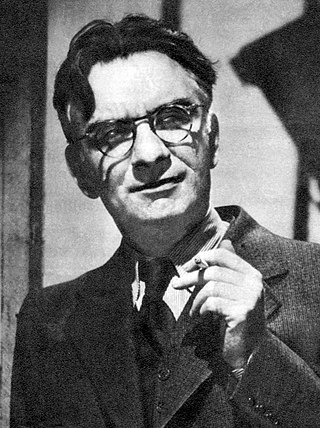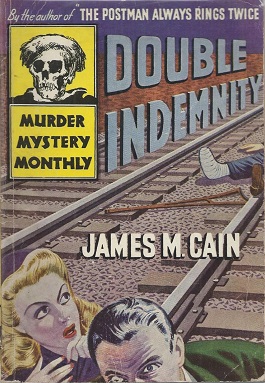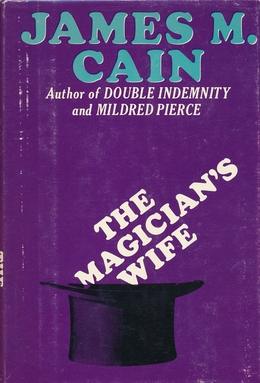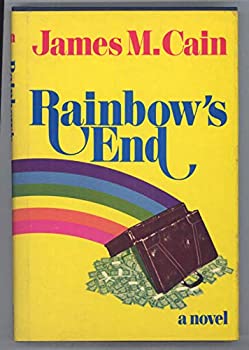Publication history
Cain completed a manuscript for The Institute in 1972. Alfred A. Knopf, Cain’s former publisher, rejected the work. wrote, “I can’t persuade myself that we should publish this and I’m terribly afraid no one else will either. Jim, alas has lived too long and can’t adapt his considerable gifts to today’s modes.” When informed that his dialogue was dated, Cain remarked, “I have to write as I write, and I can’t young it up.” [3]
After multiple rejections for The Institute, Cain turned to writing Rainbow’s End. Mason-Charter publishers ultimately agreed to publish both novels. The Institute was the penultimate novel to appear during Cain’s lifetime; The Institute convinced reviewers that Cain’s talent for writing was virtually extinguished. John D. MacDonald writing for The Sunday Times Magazine concluded that The Institute was “a faint and embarrassing echo” of Cain’s former literary talents. [4]

Mildred Pierce is a psychological drama by James M. Cain published by Alfred A. Knopf in 1941.

James Mallahan Cain was an American novelist, journalist and screenwriter. He is widely regarded as a progenitor of the hardboiled school of American crime fiction.

The Postman Always Rings Twice is a 1934 crime novel by American writer James M. Cain. The novel was successful and notorious upon publication. It is considered one of the most outstanding crime novels of the 20th century. The novel's mix of sexuality and violence was startling in its time and caused it to be banned in Boston.

Double Indemnity is a 1943 crime novel by American journalist-turned-novelist James M. Cain. It was first published in serial form in Liberty magazine in 1936 and later republished as one of "three long short tales" in the collection Three of a Kind. The novel later served as the basis for the film of the same name in 1944, adapted for the screen by the novelist Raymond Chandler and directed by Billy Wilder.
Career in C Major is an opera-themed novella by American writer James M. Cain, first published in 1938. First appearing as a serial in The American Magazine entitled "Two Can Sing", this comic romance is a departure from Cain's first novels, Postman Always Rings Twice (1934) and Double Indemnity (1936), both hardboiled crime stories that included premeditated murder. Redbook magazine, disappointed that Cain had exchanged his hard-boiled themes involving sex and murder for a "comedic adventure", declined to purchase the novella but Liberty obtained the piece and carried it as a serial in 1935.

Three of a Kind is a collection of three novellas by James M. Cain, published by Alfred A. Knopf in 1943. Each originally appeared as serials in magazines during the 1930s. The collection includes Double Indemnity, first published in 1935 as a serial for Liberty magazine; Career in C Major, originally entitled "Two Can Sing" when it appeared in The American Magazine in 1938; and The Embezzler, appearing in Liberty as "Money and the Woman", also in 1938.

Serenade is a novel by James M. Cain published in 1938 by Alfred A. Knopf. and one of four Cain novels to feature opera as a plot device. Loosely based on Bizet's Carmen, the story explores the sources of artistic development, in particular the role played by sexual orientation in the development of artistic talent.

Love's Lovely Counterfeit is a hard-boiled short novel by James M. Cain published by Alfred A. Knopf in 1942. The story is set in a Midwestern town where rival gangsters struggle to maintain control of their criminal enterprises. The work is one of only three of Cain's novels told from the third-person point-of-view.

The Butterfly is a hard-boiled novel by author James M. Cain published by Alfred A. Knopf in 1947. The story is set in rural West Virginia in the late 1930s and concerns a mystery surrounding an apparent case of father and daughter incest.

Our Government is a collection of satirical dialogues and sketches by James M. Cain published in 1930 by Alfred A. Knopf as part of The American Scene series. Our Government is the first of Cain's many books.

Sinful Woman is a detective novel by James M. Cain that appeared originally as a paperback in 1947 by Avon publishers. Sinful Woman was the most commercially successful of three paperbacks Cain wrote for Avon in the late 1940s and early 1950s.

Galatea is a romance novel by James M. Cain published by Alfred A. Knopf in 1953. The story alludes to the mythological Galatea in which the sculptor Pygmalion falls in love with the ivory figure of a woman he has crafted. In Cain’s modernized version of the Greek legend, an overweight woman is transfigured through a program of weight reduction into a goddess-like beauty.

The Root of His Evil is a novel by James M. Cain published in paperback by Avon in 1951.

The Moth is a novel by James M. Cain published in 1948 by Alfred A. Knopf. The work is the last of Cain’s four novels to feature opera as a central element of the story; the others are Serenade (1937), Mildred Pierce (1941) and Career in C Major (1943) At over three-hundred pages, The Moth is Cain’s “most personal, most ambitious and longest book” in his oeuvre, attempting to convey a “broad, social landscape” of America in the 1930s.

Mignon is a historical novel by James M. Cain published by the Dial Press in 1962. Along with Cain's Past All Dishonor (1946), Mignon is one of his two historical novels set during the American Civil War.

The Magician's Wife is a novel by James M. Cain published in 1965 by Dial Press.

Cain X 3 is a collection of three previously published novels by James M. Cain, reissued in 1969 by Alfred A. Knopf, with an introduction by Tom Wolfe.

Rainbow’s End is a crime novel by James M. Cain published in 1975 by Mason-Charter publishers, with an introduction by Tom Wolfe

Jealous Woman is a mystery novel by James M. Cain published in 1950 by Avon publishers.

The Enchanted Isle is a novel by James M. Cain published by The Mysterious Press in 1985.
This page is based on this
Wikipedia article Text is available under the
CC BY-SA 4.0 license; additional terms may apply.
Images, videos and audio are available under their respective licenses.


















